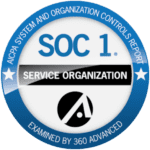🚀 TL;DR: Why Mid-Sized Companies Are Winning with Vendor Portals
Tired of drowning in spreadsheets and back-and-forth emails? You’re not alone. Mid-sized companies are ditching the chaos and gaining a competitive edge with vendor portals—secure online platforms that simplify everything from onboarding to invoice tracking.
This blog reveals what are known mid size companies that have vendor portals (like Hatfield & Associates and Cintas), and how they’re using these tools to:
- 🧾 Slash procurement errors
- 📈 Boost vendor performance with real-time insights
- ⏱️ Cut onboarding time by 3x
- 🤝 Strengthen supplier relationships
- 💰 Unlock serious cost savings (up to 10% on procurement costs)
If you’re looking to scale operations without scaling the mess—vendor portals aren’t optional, they’re essential.
In today’s rapidly evolving digital supply chain, what are known mid size companies that have vendor portals is a question more procurement and logistics managers are asking. The reason? These tools are no longer a luxury reserved for large enterprises. A vendor portal can be the backbone of streamlined supplier communication, document management, compliance, and cost savings.
Mid-sized businesses are in a unique position, large enough to need serious vendor management, but often without the budget or manpower of enterprise-level operations. This blog explores what vendor portals are, why they matter, and examples of mid-sized companies implementing them effectively.
What Is a Vendor Portal?
A vendor portal is a secure online platform that allows vendors and suppliers to interact with a company’s procurement, finance, and logistics systems. Through a vendor portal, vendors can:
- Submit invoices
- Track payments
- Upload compliance documents
- View purchase orders
- Update company information
The best vendor portals integrate seamlessly with ERP or Transportation Management Systems (TMS), offering real-time visibility and reducing the back-and-forth emails that bog down operations.
Why Vendor Portals Are Crucial for Mid-Sized Companies
1. Vendor Portals Save Time and Money
Manual procurement and invoice management can be incredibly time-consuming. According to a study published by the Journal of Supply Chain Management, companies that digitize their procurement processes reduce cycle times by up to 60% (source). That’s a major win for businesses with limited staff.
2. Improved Compliance and Documentation
A vendor portal enables automatic reminders for contract renewals, insurance documents, and certifications. This ensures your business stays compliant without manually tracking deadlines.
3. Better Vendor Relationships
When vendors can log in to a centralized portal and find what they need without delays, it builds trust. They know you’re a professional, organized partner, and they’re more likely to prioritize working with you.
4. Scalability Without Chaos
As your vendor list grows, managing those relationships via spreadsheets or email becomes unmanageable. A vendor portal allows mid-sized companies to scale operations without scaling headaches.
Supplier Portals & Vendor Platforms
In the modern business landscape, supplier portals and vendor platforms have emerged as indispensable tools for organizations aiming to streamline their procurement processes and enhance supplier relationships. A supplier portal, or vendor portal, serves as a digital gateway that bridges the gap between businesses and their vendors, facilitating seamless interaction and collaboration. These portals are typically integrated into supplier portal software solutions, offering a range of functionalities that transform traditional procurement practices into efficient, automated workflows.
Vendor Portal Platforms come in various forms, including B2B vendor portals and B2C vendor portals, each tailored to meet specific business needs. A unified supplier portal, such as the Coupa Supplier Portal, can centralize processes, making it easier for businesses to manage multiple suppliers across different regions and time zones. This centralization is crucial for logistics and other complex industries, where a Logistics Vendor Portal like Hatfield & Associates might be used to optimize supply chain operations.
Organizations have the option to utilize vendor portal solutions that can be standalone or integrated into a broader system. Standalone vendor portals focus exclusively on vendor management, while integrated solutions might offer additional features that support various business processes. Additionally, businesses can opt for a custom portal or a dedicated portal to address unique requirements, ensuring that the platform aligns perfectly with their operational goals.
Platform for vendors and platform for businesses are terms that emphasize the dual nature of these portals, serving both the vendor and the organization. By implementing a self-service portal, suppliers are empowered to manage their own data, access order information, and submit invoices independently. This autonomy not only reduces the manual workload for businesses but also enhances accuracy and supplier satisfaction.
Ultimately, the adoption of a supplier portal or vendor platform transforms vendor management into a streamlined, efficient process. By leveraging these technologies, businesses can foster stronger vendor relationships, reduce procurement costs, and improve overall supply chain efficiency. Whether through a standardized solution like the Coupa Supplier Portal or a tailored custom portal, the benefits of these platforms are clear and significant.
What Are Known Mid Size Companies That Have Vendor Portals?
You might think that only Fortune 500 companies use vendor portals, but many mid-sized organizations have successfully adopted them. Here are a few well-known mid-sized companies that have integrated vendor portals into their operations:
| Company Name | Industry | Notable Vendor Portal Feature |
|---|---|---|
Hatfield and Associates | Logistics/Transportation | Integrated with TMS and invoice tools |
Bobrick Washroom Equipment | Manufacturing | Document management and PO tracking |
J.J. Keller & Associates | Compliance Services | Real-time compliance verification |
Cintas Corporation | Uniform Rental & Safety | Vendor self-service and invoice access |
WestRock | Packaging | Global vendor onboarding |
These companies demonstrate that vendor portals aren’t just for industry giants—they’re viable and valuable tools for mid-tier operations too.
Key Features Mid-Sized Companies Should Look For
When evaluating a vendor portal, here are the must-have features tailored for mid-sized businesses:
- User-Friendly Interface: The portal should be intuitive enough that vendors can navigate without additional training, minimizing onboarding time and reducing support requests.
- Mobile Access: Ensure the portal is optimized for mobile devices, allowing vendors to access and interact with the platform from anywhere, accommodating the growing trend of remote work.
- Automated Reminders: Implement automated notifications for key compliance dates and document renewals to help your business maintain regulatory standards effortlessly.
- ERP/TMS Integration: The portal should seamlessly integrate with your existing Enterprise Resource Planning (ERP) or Transportation Management System (TMS), ensuring that data is consistent, real-time, and accessible across platforms, reducing duplication and errors.
- Custom Permissions: Offer customizable permission settings to control what information each vendor can access, enhancing data security and ensuring vendors only see data relevant to their role or tasks.
Companies That Have Vendor Portals Use Them to Scale
By leveraging vendor portals, mid-sized companies can streamline their procurement cycle, maintain healthy vendor relationships, and prepare for growth. Take Hatfield and Associates, for example. Their portal simplifies not just communication but also real-time visibility into freight billing and delivery schedules. This reduces disputes and accelerates resolution times—a key benefit when operating with lean teams.
The ROI of Vendor Portals for Mid-Sized Companies
A report from McKinsey & Company notes that companies adopting digital supply chain tools like vendor portals can increase operational efficiency by 15-20% and reduce procurement costs by up to 10% (read the study).
Given that many mid-sized firms operate on thin margins, those percentages can translate into major annual savings.
Onboarding & Performance for a Vendor Portal
In the dynamic landscape of procure-to-pay processes, efficient vendor onboarding and robust performance assessment are critical components of effective vendor management. A well-designed vendor portal plays a pivotal role in streamlining these processes to ensure compliance, enhance performance, and foster positive vendor relationships.
Streamlined Onboarding Process
A comprehensive vendor portal facilitates a seamless and efficient onboarding process. This begins with the capability to easily onboard new vendors by collecting essential compliance documents, such as insurance certificates and tax information. Automated tools within the portal assist in verifying and updating vendor information, thereby maintaining accuracy and compliance with industry standards and organizational policies. By utilizing automated onboarding processes, companies can achieve up to 3x faster onboarding times, reducing delays and minimizing administrative workload.
The inclusion of advanced contract management tools further enhances the onboarding process. These tools allow for the efficient management of contract terms, ensuring that both parties are aligned on expectations and obligations from the outset. This establishes a strong foundation for a successful vendor relationship, while also ensuring that all legal and compliance requirements are consistently met.
Enhancing Vendor Performance
Once vendors are onboarded, ongoing performance assessment becomes crucial. A vendor portal enables businesses to monitor vendor performance through key performance indicators (KPIs) that are most relevant to the company’s needs and industry standards. These KPIs may include metrics related to delivery times, cost efficiency, and quality of goods or services.
By providing a centralized view of all vendor performance data, the portal supports transparency and accountability. Businesses can leverage this data to identify areas of improvement, address bottlenecks, and engage in proactive contract management. Such insights allow organizations to make informed decisions and maintain high standards of vendor performance over time.
In summary, a vendor portal equipped with sophisticated onboarding and performance management tools not only accelerates the vendor onboarding process but also ensures ongoing compliance and optimal vendor performance. These capabilities are essential for businesses aiming to streamline their operations, reduce transaction costs, and maintain a competitive edge in their industry.
Final Thoughts: It’s Time to Think Bigger
If you’ve been managing vendors with spreadsheets and email threads, it’s time to rethink. Mid-sized companies stand to gain the most from vendor portals: better organization, fewer errors, faster processing, and improved relationships.
Whether you’re just starting to explore vendor portals or actively comparing providers, knowing what are known mid size companies that have vendor portals gives you a benchmark to work from.
And if you’re ready to see how a tailored portal could work for your logistics operation, check out the vendor portal from Hatfield and Associates.
Want help choosing the right portal or customizing one for your operation? Contact Hatfield and Associates today to learn more.




